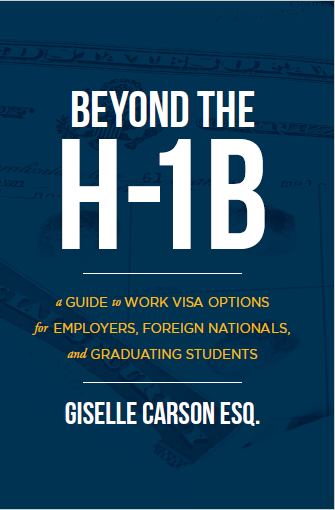The 2016 presidential election results will have a significant impact in the direction of various employer-related matters, such as health plans, taxes, paid leave, and immigration policy.
It remains to be seen whether a Trump administration will actively pursue many of the immigration campaign promises. Any significant undertakings, such as building a physical wall on the southern border, conducting extreme vetting of certain foreigners, or deporting 11 million undocumented people, will require time, debates and compromises.
Though much is still unknown, we do expect a number of changes that could provide new challenges and opportunities for employers and foreign nationals in the first 100 days of his administration.
An Increase in Employers’ Form I-9 Audits and Mandatory E-Verify
U.S. Immigration and Customs Enforcement (ICE) enforces immigration laws through actions, such as employers’ Form I-9 audits. Under the Trump administration, we expect to see an increase in the number of employer inspections, particularly in industries such as construction and agriculture, is expected.
Similarly, we expect to see a renewed push for a mandatory, nationwide E-Verify program. E-Verify is an internet-based program that supplements an employer’s Form I-9 obligations. Currently only 65 thousand of the roughly six million employers in the U.S. have signed up for the system.
Because of these possible changes, it is important that employers revisit their onboarding programs and I-9 process; stay educated about I-9 requirements; and conduct audits to proactively correct mistakes.
The End of President Obama’s DACA Program
One of the programs most at risk appears to be Deferred Action for Childhood Arrivals (DACA).
As of June 30, 2016, USCIS had approved close to 750,000 DACA applications. Those benefiting from DACA are immigrants who were brought to the U.S. as children and now have received temporary work permits and relief from deportation.
President-elect Trump vowed to end this program. Ending this program will result in the inability of these workers to continue to work legally and could create an unexpected void in the pool of authorized workers.
It is not normally required to re-verify employment eligibility during the validity period of a worker’s employment authorization. However, employers are required to terminate a worker once there is “actual or constructive knowledge” that the employee has lost work permission.
Those who have been granted work permits under the DACA program, should plan to renew their work authorization as soon as possible and consider alternative work visa programs.
Increased Restrictions on H-1B Visas
The most commonly used work visa for foreign professionals is the H-1B. Trump’s immigration platform included additional restrictions to the already highly regulated H-1B visa.
These restrictions include an increase in the prevailing wage requirements to provide a disincentive for hiring foreign workers and requiring a test of the U.S. labor market as part of the process for obtaining an H-1B visa.
Trump’s H-1B visa platform was drafted with the assistance of Senator Jeff Sessions (R-Ala.), who is a strong critic of the H-1B program. Trump’s pick of Senator Sessions as his attorney general could keep the administration focused on the enactment of his H-1B platform.
The H-1B has been an essential program for filling gaps in the U.S. workforce. Currently, there are about 400,000 workers in H-1B visas. Demand for the H-1B visa has surpassed its availability. In 2016, there were 236,000 petitions filed for 85,000 available new H-1B visas.
The increased H-1B restrictions are expected to pose challenges, particularly for employers that require visas to access professionals in science, technology, engineering and mathematics fields.
If you have employees who are currently using an H-1B visa, there are some steps you may be able to take now.
- File for an extension as soon as possible for those whose H-1B visas will expire within six months.
- Start the PERM labor certification (green card) process now if you are considering sponsoring an employee for permanent residency.
- Evaluate whether any employee holding an H-1B visa could qualify to switch to O-1 (Extraordinary Ability) visa status.
Most foreign nationals currently authorized to work in the U.S. should not expect their immigration status to be affected in the short term, since changes to regulations take time to complete. However, they should stay education and vigilant to upcoming changes.
Opportunities in Immigration
Despite the uncertainties and potential restrictions to existing visa programs, there are many opportunities to continue to promote and benefit from a fair and just immigration system that reflects the values our country was founded upon.
We are a nation built by immigrants and strengthened by each new generation. Our shared prosperity relies on the innovation and creativity of immigrants from all over the world, from all walks of life, and from all faiths and cultural traditions.
President-elect Trump promised to protect the economic well-being of the lawful immigrants already living here. And, there are continued opportunities to hire and retain foreign workers, so U.S. employers can continue to thrive in a global economy.
Considering our changing regulatory and adjudicatory immigration environment, it is worth looking Beyond the H-1B visa. There are many lesser-known options, such as:
- 36-month OPT STEM extension;
- E-3 visa for citizens of Australia;
- H-1B1 visa for citizens of Chile and Singapore;
- L-1 visa for intracompany transferees;
- Cap-exemptions for the H-1B visa; and
- O-1 visa for workers with extraordinary (prominent) abilities.
I am releasing a book which covers all these options – and more.
It is aimed at employers seeking to hire and retain foreign talent; foreign nationals seeking economic opportunities in the U.S.; and foreign students seeking work authorization after graduation.

Beyond the H-1B: A Guide to Work Visa Options for Employers, Foreign Nationals, and Graduating Students provides practical information about the most commonly used professional work visas available under U.S. immigration laws.
The book’s expected release date is January 1st, 2017. We’ll send out an email announcement when it becomes available for purchase.
